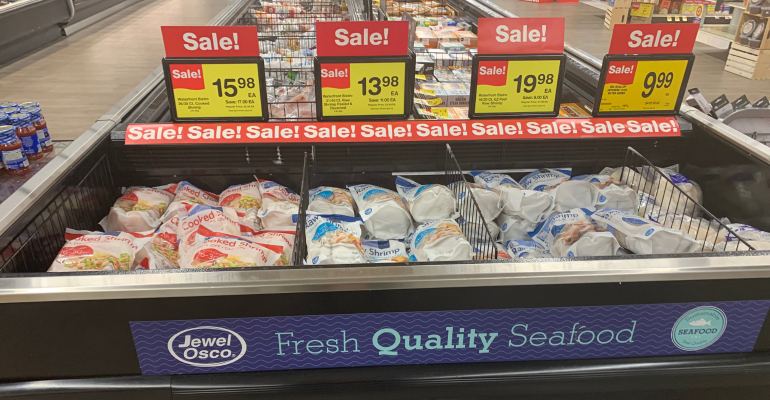Effectively merchandising seafood is becoming increasingly complex.
With shopper interest in specific types of seafood and their buying patterns often differing significantly in accordance with the consumers’ age and ethnic group, retailers seeking to maximize activity must implement sales strategies that correspond to the behaviors of their unique customer bases, analysts said.
That includes such age classes as Gen Z (18-26), millennials (27-42), Gen X (43-58), and baby boomers (59-75).
Younger consumers, for instance, are more likely to visit grocery seafood counters during every trip, reports Collage Group, a Bethesda, Md.-based consumer research firm.
That includes 14% of millennial and 13% of Gen Z shoppers, followed by Gen X (7.1%) and baby boomers (3.4%). In addition, 18% of millennials and 17% of Gen Z consumers said they are likely to visit counters on most trips, along with 11% of Gen X and 10% of baby boomers.
Among ethnic groups, multicultural consumers are more likely than white shoppers to visit seafood counters, Collage Group states. Fifty-five percent of white customers noted that they never visit the counter, compared to 35% of Asian, 35% of Black, and 31% of Hispanic shoppers.
Most consumers who eschew service counters indicate that they think it increases the cost of the items, said Jack Mackinnon, Collage Group senior director of cultural insights. Millennials also worry about having to talk to someone and needing to decide too quickly, he said.
“Gen Z agrees with millennials on both points, while older consumers, and especially boomers, are significantly less worried about the social interactions,” Mackinnon said, adding, however, that most shoppers like social exchanges.
In addition, Hispanic and Black consumers are more concerned than others about the safety and cleanliness of foods in the open counter, he said.
While freshness is the top factor that consumers cite for visiting seafood counters, other attractors vary by segment. Gen Z and millennials most often list the chance to sample products and, along with many Black shoppers said that it is easier to shop at counters than aisles, Mackinnon said.
Indicating that the seafood was caught in an eco-friendly manner will have a diverse impact on the shopper groups as well, with millennials and Black customers much more likely to seek the sustainable selections, he said.
In addition to spotlighting popular species, grocers should emphasize the ease, personalization, and cleanliness of the service counter to spur more visits by all shopper segments, Mackinnon said. “This is especially relevant for seafood options that may require more expertise to help shoppers make the best choices,” he said.
While the share of Americans who are seafood consumers remained steady in 2023, overall interest in seafood varies among the different shopper segments.
Gen Z and millennials together comprise about half of the frequent seafood purchasers, with boomers and Gen X comprising most occasional seafood buyers, states the Power of Seafood 2024 report, published by Arlington, Va.-based FMI—The Food Industry Association.
Frequent and occasional seafood consumers are equally likely to be male and female, while non-seafood consumers are primarily female (63%), the Power of Seafood states. In addition, minorities, and specifically Hispanic and Black customers, are more likely to purchase seafood online, the report notes.
Shopper attitudes towards wild-caught and farm-raised seafood also diverge. Overall, 39% of consumers indicate that they prefer wild caught. The 23% who favor farm-raised are likely to be younger, including Gen Z and millennials, and have no children, the Power of Seafood states.
In addition, 39% of seafood customers, and primarily Gen X and baby boomers, have no preference or do not know the difference between farm-raised and wild-caught seafood, the report notes.
Younger shoppers are more likely to continue purchasing seafood as well. Among the “lost” seafood buyers last year, 33% were from Gen X, 20% were older millennials, and 17% were younger boomers, states the Seafood at Retail 2024 report, developed by Chris DuBois, executive vice president and practice leader at Circana, a Chicago-based market research firm, and Anne-Marie Roerink, president of 210 Analytics LLC, a San Antonio-based market research and marketing strategies firm.
Older customers are more prone to purchase frozen seafood, with baby boomers, seniors, retirees, and Gen Xers all over-indexing, the Power of Retail states. Older shoppers also over-index in their purchasing of shelf-stable seafood.
Being able to pinpoint and respond to such demographic differences is vital for sustaining and expanding a store’s seafood shopper base, the Power of Retail notes. “Keeping and growing high-value consumers is extremely important given the impact on category performance,” the report states.





